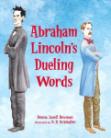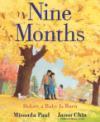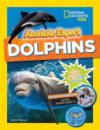
Welcome to STEM Tuesday: Author Interview & Book Giveaway, a repeating feature for the fourth Tuesday of every month. Go Science-Tech-Engineering-Math!
 Today we’re interviewing Sara Latta, author of Body 2.0: The Engineering Revolution in Medicine, among several other titles. The book features modern biomedical engineering challenges, some of the STEM professionals who do it, and people who have benefited from it. (Check out the Kirkus review here! If you subscribe to SLJ or Booklist, you can see additional reviews at those sites.)
Today we’re interviewing Sara Latta, author of Body 2.0: The Engineering Revolution in Medicine, among several other titles. The book features modern biomedical engineering challenges, some of the STEM professionals who do it, and people who have benefited from it. (Check out the Kirkus review here! If you subscribe to SLJ or Booklist, you can see additional reviews at those sites.)
Carolyn Cinami DeCristofano: What’s the book about—and what was most important to you in deciding to write it?
 Sara Latta: Thanks for having me on your blog! Body 2.0 explores the ways in which engineering, science, and medicine are coming together to make some remarkable advances in the fields of tissue engineering and regenerative medicine, neuroscience, microbiology, and synthetic biology. I begin the book with a brief history of biomedical engineering—arguably the first known example of which was a wooden toe found on an ancient Egyptian mummy—but primarily the book focuses on cutting-edge research and the scientists at the forefront of the research. That was important to me; much of the work I write about hasn’t even reached clinical trials. I wanted to show readers that they could jump into this research at a very exciting time.
Sara Latta: Thanks for having me on your blog! Body 2.0 explores the ways in which engineering, science, and medicine are coming together to make some remarkable advances in the fields of tissue engineering and regenerative medicine, neuroscience, microbiology, and synthetic biology. I begin the book with a brief history of biomedical engineering—arguably the first known example of which was a wooden toe found on an ancient Egyptian mummy—but primarily the book focuses on cutting-edge research and the scientists at the forefront of the research. That was important to me; much of the work I write about hasn’t even reached clinical trials. I wanted to show readers that they could jump into this research at a very exciting time.
CCD: Did anything about your sense of what was most important change as you developed the manuscript?
SL: I don’t know if it was most important, but at some point during the interviewing process I came to the realization that telling the story of the ways in which the scientists and engineers came to this point in their research would be really interesting to my readers. Several of them said they initially wanted to be medical doctors because they wanted to help people, but they didn’t have the stomach for it. One was an athlete who was inspired by his own injury; another transferred her love of Sherlock Holmes and detective work to scientific sleuthing. So I decided I had to create a separate section telling their stories.
CCD: What in the book most fascinated or surprised you?
SL: Well, there was a lot! I’d been fascinated by brain-computer interfaces for several years, and even tried writing a sci-fi YA thriller using that technology a while back (it’s still in a folder on my computer). It’s really astounding how quickly work in the field—and other fields in the book as well—has progressed. I think that the work in synthetic biology holds enormous promise, not just in biomedical engineering but in other fields as well. The New York Times recently published an article about using photosynthetic bacteria to make concrete that is alive and can even reproduce.
CCD: I’d like to ask you a bit about your decisions about addressing ethics in Body 2.0. If I counted correctly, you spotlight three particular areas where scientific investigation and technological advancements raise important issues. Can you say a bit about your decision-making process about how much and what to spotlight, and your lasting impressions of the ethics related to this field?
SL: I told my editor going in to this project that I wanted to highlight some important ethical issues that some of this work raises, and she said “yes, absolutely.” It’s important to think about unintended consequences. I use the example that the discovery of petroleum as a cheap and plentiful source of fuel in the 19th century revolutionized the ways we lived, worked and traveled—and now we are paying the price with a global climate crisis. So I asked the question, what does it mean to be a human being when your brain is in a symbiotic relationship with a computer? Will these new technologies be available only to those who can afford them? One of the pioneers of gene editing recounted being jolted awake by a dream in which Adolf Hitler expressed interest in her work. It made her realize that “the ability to refashion the human genome was a truly incredible power, one that could be devastating if it fell into the wrong hands.”
CCD: As an author, what did you find most challenging about completing this book?
SL: Organizing all of the interviews and research I did for the book! I relied heavily on Scrivener and Evernote to bring it all together.
CCD: Can you say something about how you hope this book might impact readers?
SL: Biomedical engineering is all about improving the quality of life for people with diseases or injuries, whether it’s helping a person with quadriplegia become more independent or growing a bladder for a kid with spina bifida. I hoped to inspire idealistic young people interested in science, medicine, or engineering, who are also interested in making a positive difference in the world.
Win a FREE copy of Body 2.0: The Engineering Revolution in Medicine!
Enter the giveaway by leaving a comment below. The randomly-chosen winner will be contacted via email and asked to provide a mailing address (within the U.S. only) to receive the book.
Good luck!
 Your host is Carolyn Cinami DeCristofano, author of National Geographic Kids Ultimate Space Atlas, Running on Sunshine, andA Black Hole is NOT a Hole, among several nonfiction books for kids. As a STEM Education Consultant and co-founder of two STEM education organizations, STEM Education Insights and Blue Heron STEM Education, she develops STEM curricula, supports STEM education research, and provides professional development for teachers. Along with several STEM Tuesday contributors and other great authors, she’ll be participating in NSTA’s Science and Literacy event in Boston this spring. She’ll also be co-presenting with author Cheryl Bardoe. Grab a sneak peek now, but better yet, stop by and say hello!
Your host is Carolyn Cinami DeCristofano, author of National Geographic Kids Ultimate Space Atlas, Running on Sunshine, andA Black Hole is NOT a Hole, among several nonfiction books for kids. As a STEM Education Consultant and co-founder of two STEM education organizations, STEM Education Insights and Blue Heron STEM Education, she develops STEM curricula, supports STEM education research, and provides professional development for teachers. Along with several STEM Tuesday contributors and other great authors, she’ll be participating in NSTA’s Science and Literacy event in Boston this spring. She’ll also be co-presenting with author Cheryl Bardoe. Grab a sneak peek now, but better yet, stop by and say hello!


 biographer of women in STEM, reminded us that while it is great to share books about women, people of color, or other underrepresented groups in STEM with girls or kids of color only, it’s even better—and vitally important—that we share these stories with all children (and adults). It’s also key to break out of biographies and include stories for middle grade readers of scientists doing science. Need some examples? How about Patricia Newman’s Eavesdropping on Elephants or Mary Kay Carson’s The Tornado Scientist?
biographer of women in STEM, reminded us that while it is great to share books about women, people of color, or other underrepresented groups in STEM with girls or kids of color only, it’s even better—and vitally important—that we share these stories with all children (and adults). It’s also key to break out of biographies and include stories for middle grade readers of scientists doing science. Need some examples? How about Patricia Newman’s Eavesdropping on Elephants or Mary Kay Carson’s The Tornado Scientist? biographies, pointed out that individual STEM thinkers are specific to their place, time, and social contexts. Meanwhile, books about technology, including, for example, my Running on Sunshine or Jennifer Swanson’s Super Gear, root conceptual information in strong, motivating contexts. (It was wonderful to chat with teachers who appreciate the connections between their curriculum about “the sun” and solar energy technologies. This is just the type of connection-making that the NGSS emphasizes.)
biographies, pointed out that individual STEM thinkers are specific to their place, time, and social contexts. Meanwhile, books about technology, including, for example, my Running on Sunshine or Jennifer Swanson’s Super Gear, root conceptual information in strong, motivating contexts. (It was wonderful to chat with teachers who appreciate the connections between their curriculum about “the sun” and solar energy technologies. This is just the type of connection-making that the NGSS emphasizes.)


 Amy M. O’Quinn
Amy M. O’Quinn

 Natascha Biebow
Natascha Biebow 
 Nikole Brooks Bethea
Nikole Brooks Bethea





 Susan M Latta
Susan M Latta 
 Janet Slingerland
Janet Slingerland
 Miranda Paul
Miranda Paul 




 Kate Narita
Kate Narita 
 Laurie Wallmark
Laurie Wallmark 
 Mary Kay Carson
Mary Kay Carson MISSION TO PLUTO
MISSION TO PLUTO Jennifer Swanson
Jennifer Swanson

